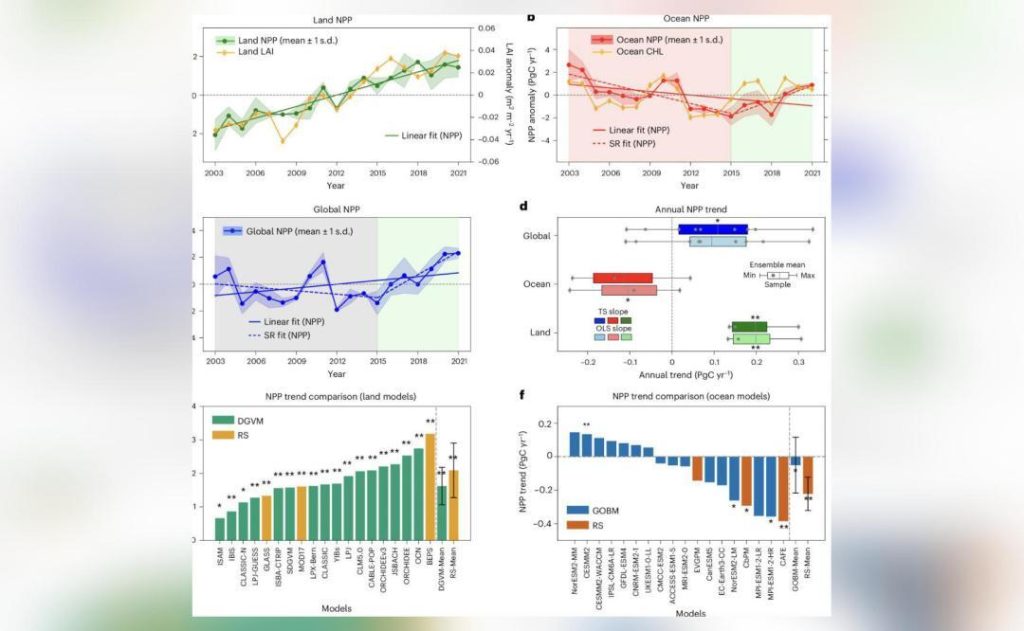
Title: Upswing in Photosynthesis Driven by Land, Offset by Oceans: Study
Photosynthesis, the process by which plants, algae, and some bacteria convert light energy into chemical energy, is a crucial component of the Earth’s ecosystem. It is responsible for producing the oxygen we breathe and is the basis of the food chain. However, the rate of photosynthesis can fluctuate due to various environmental and climate factors. A recent study published in Nature Climate Change has shed light on the trend of photosynthesis over the past two decades, with surprising results.
According to the study, terrestrial plants have driven an increase in global photosynthesis between 2003 and 2021. This trend is significant, as it suggests that the Earth’s vegetation is becoming more efficient at producing energy from sunlight. The study’s authors used six different satellite-based datasets on net primary production (NPP) – three for land and three for oceans – to analyze the trend over the 18-year period.
NPP is a measure of the amount of organic matter produced by plants and the rate at which it is consumed by herbivores and decomposed by microorganisms. The datasets used in the study were from the Moderate Resolution Imaging Spectroradiometer (MODIS), the Advanced Very High Resolution Radiometer (AVHRR), and the Visible Infrared Imaging Radiometer Suite (VIIRS) satellites.
The results of the study show that terrestrial plants drove an increase in global NPP, with an average annual increase of 0.03-0.04 gigatons of carbon per year. This is a significant increase, equivalent to about 10-15% of the total carbon dioxide emissions from fossil fuel burning and land use change over the same period.
However, the study also found that the increase in NPP on land was partially offset by a weak decline in NPP in the oceans. This decline was small, averaging about -0.01 gigatons of carbon per year, but it is still significant. The authors suggest that this decline may be due to changes in ocean circulation patterns, temperature, and nutrient availability.
The study’s findings have important implications for our understanding of the Earth’s carbon cycle and the role of photosynthesis in regulating the atmosphere. The increase in NPP on land suggests that the Earth’s vegetation is becoming more efficient at absorbing carbon dioxide from the atmosphere, which could help to mitigate the effects of climate change. However, the decline in NPP in the oceans suggests that there may be limits to the Earth’s ability to absorb carbon dioxide, and that other factors, such as changes in ocean circulation and temperature, may be more important in determining the rate of photosynthesis.
The study’s authors also suggest that their findings could have implications for the development of more accurate climate models. Climate models often rely on assumptions about the rate of photosynthesis, and the study’s findings suggest that these assumptions may need to be revised. The authors propose that future studies should focus on improving our understanding of the factors that drive changes in photosynthesis, both on land and in the oceans.
In conclusion, the study’s findings suggest that terrestrial plants have driven an increase in global photosynthesis over the past two decades, but that this trend is partially offset by a weak decline in photosynthesis in the oceans. The study’s results have important implications for our understanding of the Earth’s carbon cycle and the role of photosynthesis in regulating the atmosphere, and highlight the need for further research into the factors that drive changes in photosynthesis.






